The explosion of the hot drinks category is much more than just a storm in a tea cup. Over the past decade or so we’ve seen a wholesale revolution in the drinks we Brits sip to get through the day - or to chill out at night.
Take coffee. Fifteen years ago customers would plump for instant, or maybe ground if they had a cafetière at home. Today the coffee market is worth £984m (Nielsen) and is sub-divided into everything from upmarket whole bean instant (with brands such as Nescafé Azera and Kenco Millicano) to reliable instant granules and the newest kid on the block, coffee pods.
It’s the same story in the £644m (Nielsen) tea category, where seemingly endless fruit and herbal variations fight for space on the shelf alongside the traditional black tea and tea bags.
This is great news for consumers looking for more choice in their daily cuppa, but it can make it hard for retailers to keep up.
Pick your way through the choice in tea
In days past the only choice shoppers had to make in the tea aisle was between tea bags versus the stuff you’d put in a pot. But today, the decline in black tea, and the growth in herbal choices has made the market more complex.
“The largest proportion of total tea is standard black tea, which makes up 64% of the total category; this sector is in decline by minus 7% year on year,” says Hannah Barnes from Taylors of Harrogate.
“Part of this decline is due to the growth of the healthy tea sectors such as fruit, herbal, green and speciality.”
This trend has put the impetus on traditional tea brands to introduce herbal variants, and even go green. Tetley now has three of the top five best-selling SKUs in the green segment in impulse (according to Nielsen) with Green Pure Lemon 20s sitting at number two.
“We know that our green teas have brought more people into the category,” says Andrew Pearl, director of shopper and customer marketing at Tetley, “and are working to broaden the appeal.”
Traditional tea brand PG tips has also made the decision to go green with a new range of fruit, herbal and green variants.
Says Kate Mitchell, brand manager at PG Tips: “By launching a new range into our portfolio we’re aiming to attract new consumers to the category and drive incremental sales within both the fruit & herbal and green sectors.”
“In the past five years the category has got more diverse as there are more and more variants,” says Guy Warner from Warner’s Budgens in Moreton, Broadway, and Bidford-on-Avon.
“You only have to look at tea. The tea market really reflects where the hot drinks category has gone. You’ve got fruit teas, Fairtrade teas, unbleached organic teas - it just goes on and on.”
Warner maintains that to stay competitive and - more importantly - convenient, larger stores should consider stocking a fairly comprehensive range if they have the space.
“It’s definitely not for every store - but there’s an expectation now to have a large range to reflect the market,” he says.
“If you don’t have a relatively full range you’re not going to be on the radar for certain customers.”
Of course, the core range that stores should stock will depend on their customer demographic.
Paul Gravelle, who owns three stores in Cambridgeshire, Hertfordshire and London, describes his customer base as fairly traditional and has seen first-hand how their needs can change according to the way the economic wind blows.
“We opened our store in the mid-2000s,” he says. “Back then we had a big range with all the premium products. However, the recession hit and customers sharpened up their spending - so we had to sharpen up our range and cut back.”
But as the economy gets into better shape, Paul expects the range he stocks to become more like it was pre-recession. “I do think this is starting to change back as customers come out of the recession,” he asserts.
Paul says that in smaller format stores the bottom line for the hot drinks market is big brands. “I’d say that small shops should stick to the best-sellers, and in this market that means brands. Pack size is important, too. There’s no point having massive packs in a small shop.”
He stocks a good breadth of range in his stores and uses Musgrave’s planogram, so he offers organic, Fairtrade and fruit teas, as well as big brands such as Nescafé and Gold Blend.
Both Guy and Paul agree that the packaged hot drinks market, despite its size, is never going to be a massive sales leader. Yet, it’s still a must-stock category, simply because customers want to be able to visit their local store to top up on tea and coffee.
“It’s a category you’ve got to have there for customers,” says Gravelle. “I wouldn’t say it’s a massive sales driver, but it’s still something customers expect.”
That’s not surprising in such a high-penetration category. In its research, Mintel reports that 77% of people polled drink tea - with half having a cuppa at least once a day.
It’s a similar story over in coffee, with more than eight in 10 adults identifying themselves as coffee drinkers and three in five getting their coffee fix every morning.
For c-stores, this translates into shoppers on a serious top-up mission, according to Hannah Barnes from Taylors of Harrogate.
“The convenience hot beverage shopper (especially in tea) is 77% more likely to be on a larger top-up mission and will spend more in store,” she says.
Barnes also relates how the recession has led to a new ‘little and often’ shopping trend which is good news for convenience retailers, but has created an environment in which shoppers are after the best value.
This lingering passion for thrift hasn’t necessarily led to the hot drinks aisle becoming a sea of pricemarked packs (PMPs), though. Paul says that his stores don’t go big on PMPs, preferring instead to use canny promotions to create interest and boost sales.
“We don’t do loads of PMPs in coffee and teas,” he says. “But then I’ve looked in Tesco at their range and seen that they don’t either. What we do is promotions: say, when we can offer a 300g Gold Blend for a fiver. When we do that it always does really well.
“On the other hand, refill packs we have seen going big. They’re cheaper, so do well. We have big glass jars of coffee at home and we’ll buy the refill packs from the store to fill up.
Speciality teas
Builder’s tea may be the nation’s signature brew, but many customers are seeking a more esoteric cuppa.
“Speciality teas - those of a specific origin such as Assam or Darjeeling, or with additional flavours such as Earl Grey and Chai, have delivered growth of more than 13% in the impulse channel in the past year,” says Rob Brazier, customer business director at Twinings.
He maintains that Twinings is the market leader in the convenience speciality category, accounting for more than 86% of speciality sales in the channel.
The ripples from Twinings’ Make Water Wonderful TV ad should keep sales stirring throughout winter.
Normally customers seeking value will go for own brand in store. But Mintel reports that own label, despite being super-economical, has only “a minor share” of the market - mainly due to a long tradition of big marketing spend from the big boys.
“Own label is important for non-brand conscious consumers who are after value for money, although its presence in independent retail is minimal,” confirms Rob Sargeant, brand manager at Douwe Egberts.
Changing tastes
In hot drinks, the high street coffee-to-go revolution has been the most seismic shift in the sector. And whether you love them or hate them, Starbucks and co have helped turn even the most ardent instant coffee drinker into a latte-loving aficionado.
This has put pressure on brands to provide a quality coffee experience at home, while instantaneously upping the game for the whole sector along the way.
“Quality is helping to drive the market,” says Guy. “The days when customers were happy with a poor quality cup of coffee are gone. Now there’s a benchmark and, dare I say it, that benchmark has been set by your Costas and your Starbucks on the high street.
“The customer doesn’t see good coffee as a nice-to-have anymore. It’s a real minimum-to-expect. So if you’re not in the game for quality, you’re not really in the game.”
In the packaged category this might mean a trend towards the micro bean coffees pioneered by Kenco and Nescafé. But equally it can also see consumers increasingly come in for ground coffee.
“Most of our customers tend to be well-off, so we sell a lot more ground coffee than anything else,” says Calum Duncan, manager at Kincraig Stores in Inverness-shire.
“People buy brands such as Taylors of Harrogate and Traidcraft. Our customers are looking to take something good home that they can put in their cafetières.”
Interestingly enough, although cafetières were once considered quite old fashioned compared with espresso-based machines, experts predict that they’re set to make an at-home comeback.
In fact, if you look at some of the cutting-edge coffee bars in trendy Shoreditch or Brighton, baristas are returning to filter coffee to differentiate themselves from the ubiquitous chains.
“There’s a lot of talk about the ‘third wave’ of coffee,” says Chris Thompson, CEO of coffee provider Paddy & Scott’s. “I do think that at home there’s going to be a rise in filters and cafetières. Coffee machines and the coffee pods can be great - but they do cost a lot. Cafetières are a good way of making quality coffee at home without spending out too much money.”
Hot drinks display
Merchandising tips from Susan Nash, trade communications manager for Mondelez International
● Ensure the growing sectors are well represented in your range. Cover a range of qualities, from instant granules to super-premium in coffee
● Focus on top sellers, with brands that consumers know and trust
● Use POS to promote associated categories such as sugar and milk
● Consider holding staff tasting sessions when you introduce new lines, so they can talk with confidence about the different types of coffee available
● Don’t let lack of space be your excuse. A wide range of tastes can be catered for in two or three shelves.
However, such is the growing popularity of pods that well-known companies such as Dualit are entering the market.
The company has recently launched a range of Nespresso and Dualit 3 in 1 coffee machine-compatible coffee capsules into the Co-op. The company is now in talks with other convenience store groups to introduce the capsules in the independent market.
As well as quality, ethical concerns are becoming more important to coffee and tea drinkers. Today, the Fairtrade mark is much more visible in the hot drinks aisle, with a 27% market share in roast coffee.
“Fairtrade is celebrating its 20th anniversary in the UK this year and coffee was one of the first categories we launched,” says Kate Lewis, acting head of product management at the Fairtrade Foundation.
“Since then, Fairtrade tea, coffee and hot chocolate have reached £371m retail sales in the UK.”
Calum says that Fairtrade does well in his store, with Traidcraft coffee a top-seller. “I’m not sure that it’s particularly a best-seller just because it’s Fairtrade, but customers definitely think it tastes good,” he says.
“We’re in the process of becoming a Fairtrade village, so we’re having to re-stock the shop, including tea and coffee.”
Meanwhile, if you can’t beat the big coffee chains, it might be time to join them with a quality coffee-to-go offer.
“If you’ve got the space, a quality bean-to-cup coffee offer is a real no-brainer for retailers,” says Max Jenvey from Oxxygen Marketing.
“It creates footfall all day, not just during the morning, and inspires shoppers to come in and buy other things while they’re there.”
Chris Ward, from Eurospar Milford Haven in Pembrokeshire, has become something of a coffee-to-go evangelist after seeing the category go crazy in recent times.
The effect of coffee culture
” While we were the instant coffee generation, I think that young people today have grown up with espresso-based drinks. The rise of the high street chains has made people more confident about their coffee. There’s a constant growth in out-of-home consumption and I think everyone’s benefited from the rising tide effect. We’re now seeing high interest in single-origin, high-quality coffees. They’re also more likely to experiment with something a bit different. ” Chris Thompson
CEO, Paddy & Scott’s
“I’ve been in the game for 20 years,” he says, “and if at the start you’d have told me that we’d be selling this much coffee I’d have just thought you were joking.”
Suiting all tastes
Chris’ success with to-go coffee started eight years ago when he installed a basic coffee machine in-store. “It was just all from freeze-dried granules, but you could do a mocha or a latte for a pound. We didn’t know how it would do, but it soon took off.”
He says that most of the coffee was being bought by taxi drivers and builders who needed a fast and convenient caffeine hit at a low price. So when he got the opportunity to install a Costa Express machine he was nervous about how it would go down.
“The taxi drivers were coming in and drinking five coffees a day and I thought that if they’d have to pay two quid at the Costa machine they wouldn’t come back,” he says.
In the end, Chris kept both coffee machines. “And the funny thing is,” he says, “they’re both doing really well.”
He adds: “What I didn’t realise is that they’re two completely different markets. For some people a coffee is just a coffee and they’re happy to use the basic machine, but now we get in the Costa crowd, too.”
Cut through the confusion
”With coffee you have a number of delivery formats, but by and large selection is made on the basis of strength and flavour, full bodied or decaf. With tea the choice is endless and this can be overwhelming for some shoppers. Shoppers need to be encouraged to linger for longer in the tea aisle - they have to understand what’s on offer and how the variety of teas can fit into their daily lives, and this is something we want to explore much more with retailers this year. ”
Andrew Pearl, director of shopper and customer marketing at Tetley
With his new Subway concession installed there are now three places in which customers can buy fresh coffee in his store. Chris sounds delighted that rather than cannibalising each other, they’re all doing good business.
His enthusiasm for coffee-to-go is echoed by Guy Warner, who says that hot drinks-to-go is a complement to a store’s packaged offer. “Coffee-to-go doesn’t take business away from packaged hot drinks,” he says. “That’s a bit like saying packaged sandwiches affect sales of our bread and ham.”
He adds: “Hot drinks used to be about selling jars and packets. Now it’s about jars, packets and food-to-go. These days it’s about fulfilling the whole range.”
Despite this general positivity, coffee-to-go isn’t a hit for everyone. Paul says that coffee machines in his stores failed to take with customers.
All of which goes to show that, when you’re negotiating the wealth of brands and formats that make up the hot drinks mix, it’s their decision that really counts.
“I think one of the key things is merchandising hot drinks right and making sure you have what customers want,” says Calum.
“Asking people what they’re after is important: we’re always looking for customers’ ideas. I think with hot beverages we’ve got it right. If we had it wrong they’d definitely be telling us!”
IN BRIEF
Going for gold
The mash-up of Cadbury chocolate with multiple formats continues apace with the launch of Cadbury Wispa Gold. The caramel-filled drink features a frothy top for a decent make-at-home version of the coffee chain experience. Wispa Gold branding ensures good shelf standout.
Yorkshire hospitality
Despite the decline in black tea, Yorkshire Tea is currently in 5% growth year on year, which proves that this dependable brand is a winner with tea-supping northerners and softy southerners alike. The brand recently gave out Yorkshire Tea to spectators of the Tour de France’s Yorkshire leg.
Tetley adds more green teas
Tetley is getting further into the growing green tea category with a fresh selection of flavoured variants on the classic Chinese taste: green tea mango & passion fruit; peach & pomegranate; raspberry and pomegranate; and mint.
Media monkey
Monkey, the famous PG Tips mascot, has launched his own Instagram account. It’s a new ruse designed to connect with a younger female audience who’ll hopefully interact with the cheeky character online while sipping a warm winter brew.
Go classic
Douwe Egberts hopes to supercharge the granulated coffee sector with new Classic Roast 100g coffee. The product offers the quality flavour associated with the brand, in a premium-style jar. It’s backed by marketing including a TV ad in October.
Source
Matt Chittock
















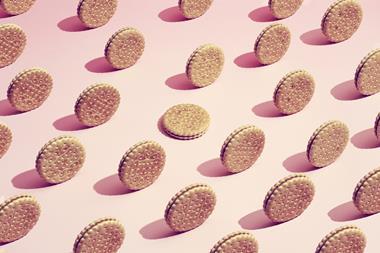
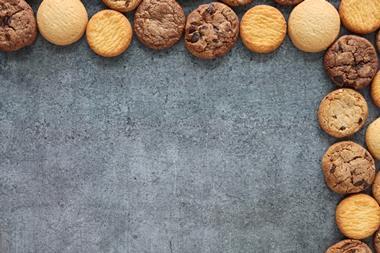

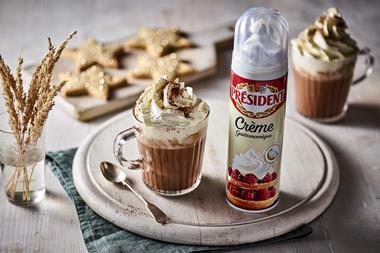
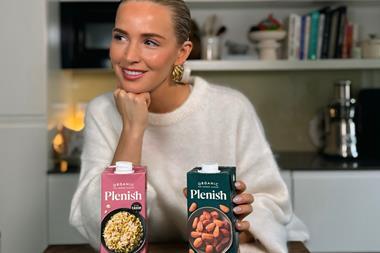
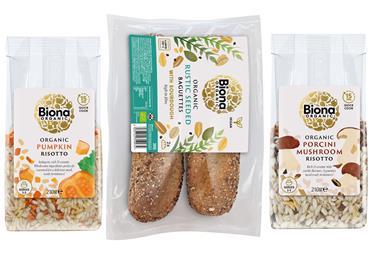






No comments yet